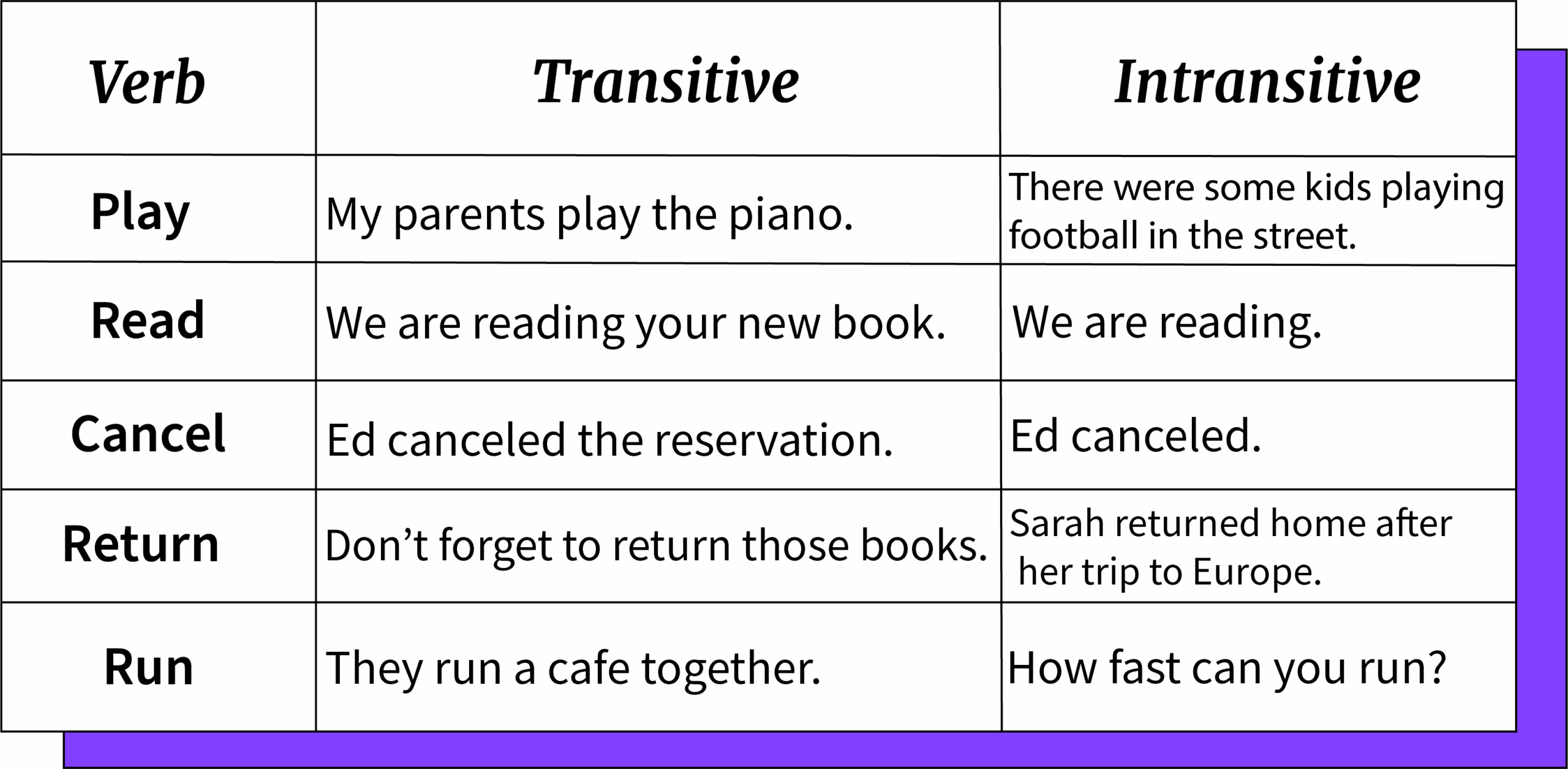Verbs are an essential part of language that indicate actions, occurrences, or states of being. They can be classified into transitive and intransitive verbs based on their usage in a sentence.
Transitive verbs require a direct object to complete their meaning, while intransitive verbs do not. Understanding the difference between the two can help improve your writing and communication skills.
Transitive Verb and Intransitive Example
A transitive verb is a verb that requires a direct object to complete its meaning. For example, in the sentence “She ate the cake,” the verb “ate” is transitive because it requires the direct object “the cake” to make sense.
On the other hand, an intransitive verb does not require a direct object to complete its meaning. For example, in the sentence “He slept peacefully,” the verb “slept” is intransitive because it does not need a direct object to convey the action.
Transitive verbs can be further classified into object complement verbs, which require a direct object and a complement to complete their meaning. In contrast, intransitive verbs do not take a complement to convey the action or state of being.
It is important to note that some verbs can be used as both transitive and intransitive, depending on the context of the sentence. For example, the verb “run” can be transitive when it requires a direct object (“He ran a marathon”) or intransitive when it does not (“She runs every morning”).
Understanding the distinction between transitive and intransitive verbs can help you construct clearer and more concise sentences. By identifying whether a verb requires a direct object or not, you can ensure that your writing is grammatically correct and effectively conveys your message.
In conclusion, transitive verbs require a direct object to complete their meaning, while intransitive verbs do not. By recognizing the difference between the two types of verbs, you can enhance your language skills and communicate more effectively. Practice identifying transitive and intransitive verbs in sentences to improve your grammar and writing abilities.
